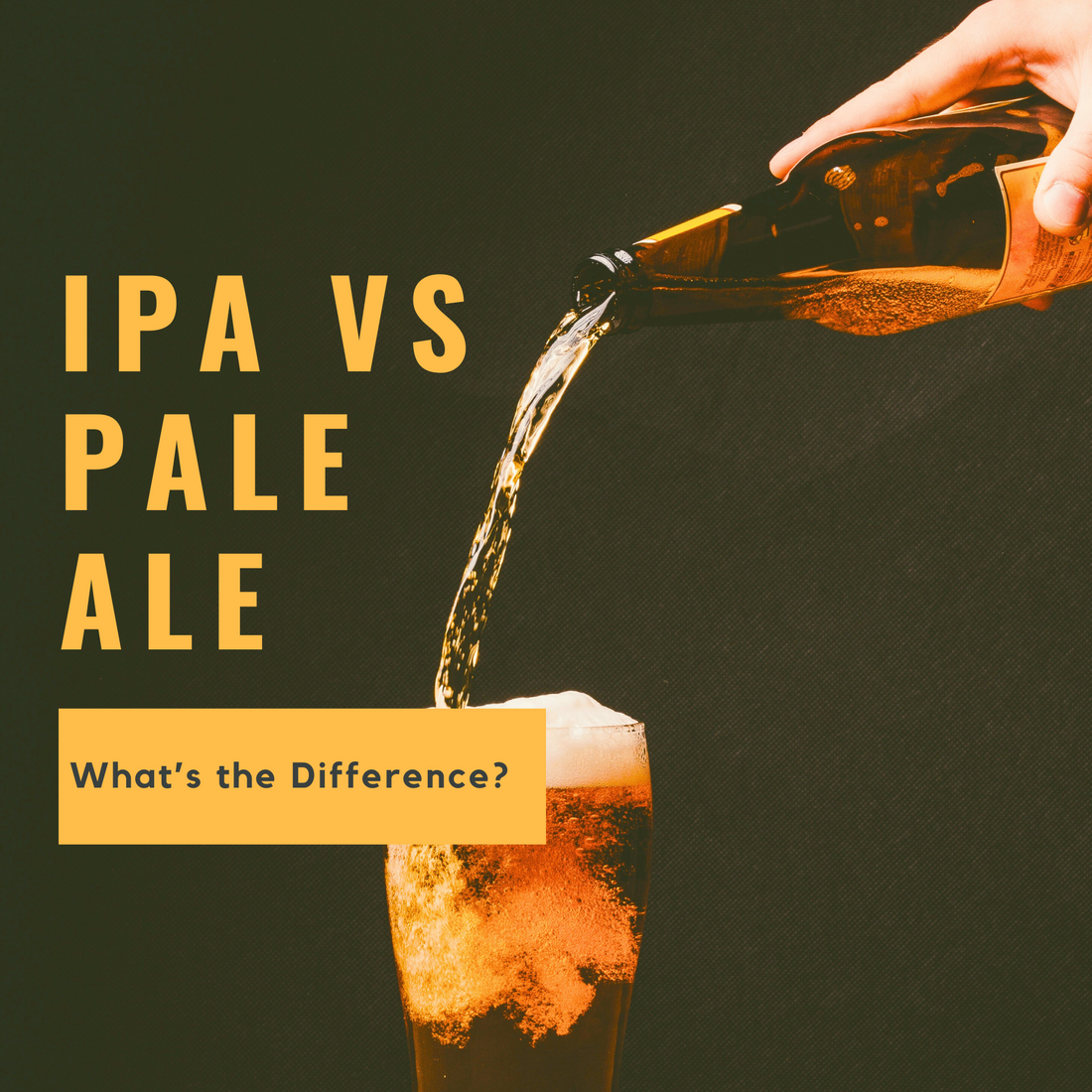In the world of craft beer, variety is the name of the game. Out of all of the fish in the sea, two craft beer styles keep popping up every now and then. India Pale Ale (IPA) and Pale Ale.
While both are beloved choices among craft beer drinkers, they have distinct characteristics that set them apart. Let's crack a can (or raise a glass), and see what makes these 2 beers so different.
The Basics of Pale Ale & IPA
Pale Ale
Pale ales are known for their malty sweetness and gentle hop bitterness. It's like a good ol' family friend - approachable and easy-going in nature. Originating in England, this brew is known for its pale golden to amber color, moderate alcohol content (making it very easy to drink), and strikes the perfect balance between malty and hoppy.
IPA (India Pale Ale)
IPA, on the other hand, is a subcategory of Pale Ale that has gained immense popularity. It's known for its strong hop flavor, higher alcohol content, and a wide range of flavors. IPAs come in various substyles, such as American IPA, New England IPA, and West Coast IPA, each with its unique characteristics.
Now, let's delve deeper into the differences.
Hoppiness
One of the most noticeable distinctions between IPA and Pale Ale is the level of hoppiness. Hops are the flowers that give beer its bitterness, aroma, and flavor. In Pale Ales, hops are typically present but play a more subtle role. They contribute to a balanced flavor profile without overwhelming the beer. Pale Ales are characterized by a milder hop bitterness, making them a great choice for those new to craft beer.
In contrast, IPAs are all about hops. They often have a pronounced and complex hop aroma and flavor. The bitterness in IPAs can range from moderate to intense, depending on the specific substyle. If you're looking for a beer that offers a bold hop experience with floral, citrusy, or piney notes, an IPA is your go-to choice.
Alcohol Content
Another key difference lies in the alcohol content. Pale Ales typically have a moderate alcohol by volume (ABV) percentage, ranging from 4% to 6%. This makes them sessionable, meaning you can enjoy a few over a longer period without feeling the effects of alcohol too quickly.
IPAs, on the other hand, tend to have a higher ABV, typically ranging from 6% to 7.5% or even higher in some cases. The combination of increased hop bitterness and alcohol content gives IPAs a more robust and intense flavor profile.
Color
The appearance of the beer can also help you distinguish between IPA and Pale Ale. Pale Ales, as the name suggests, tend to have a pale to amber color. They are generally clear and have a lighter hue.
IPAs, on the other hand, can vary widely in color. American IPAs are often golden to amber, similar to Pale Ales. However, New England IPAs are known for their hazy and opaque appearance, while some West Coast IPAs can be quite clear but still have a more intense color than traditional Pale Ales.
Flavor Complexity
While both IPA and Pale Ale can offer a range of flavors, IPAs are known for their complexity. They can feature a wide spectrum of hop flavors, from tropical fruits and citrus to pine and resin. The malt backbone in IPAs is often more subdued, allowing the hops to take center stage. This results in a beer that's bold, aromatic, and bursting with flavor.
Pale Ales, while still flavorful, are generally more balanced and malt-forward. They offer a mix of malt sweetness and hop bitterness without the extreme hop dominance found in IPAs.
Conclusion
In the world of craft beer, the choice between IPA and Pale Ale ultimately comes down to personal preference. If you're seeking a beer with a milder hop profile, moderate alcohol content, and a balanced flavor, Pale Ale is a solid choice. On the other hand, if you're a hop enthusiast looking for a bold, hoppy experience with higher alcohol content, then an IPA should be your pick.
Remember that within these broad categories, there are numerous substyles and variations to explore, each offering its unique twist on the classic Pale Ale or IPA. So, the next time you find yourself at a brewery or beer store, don't hesitate to try both styles and discover the nuances that make the world of craft beer so fascinating. Cheers!

